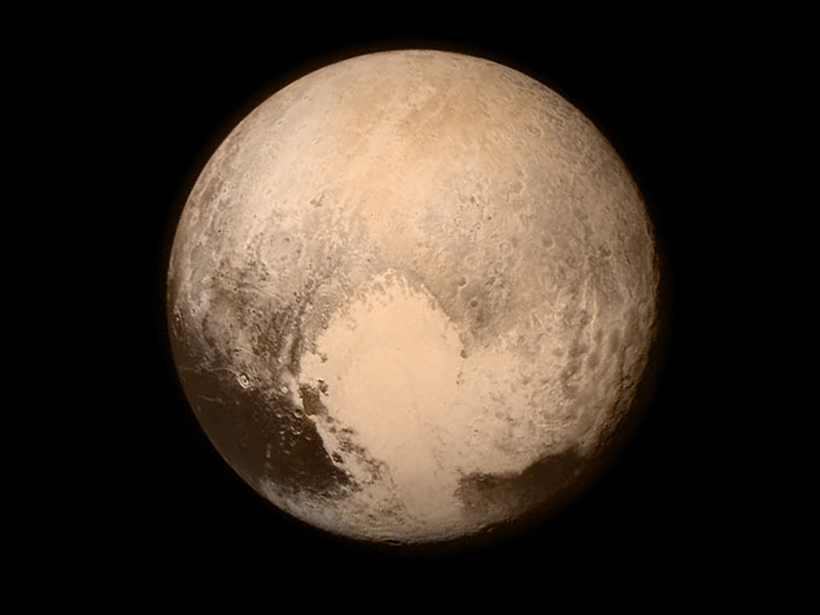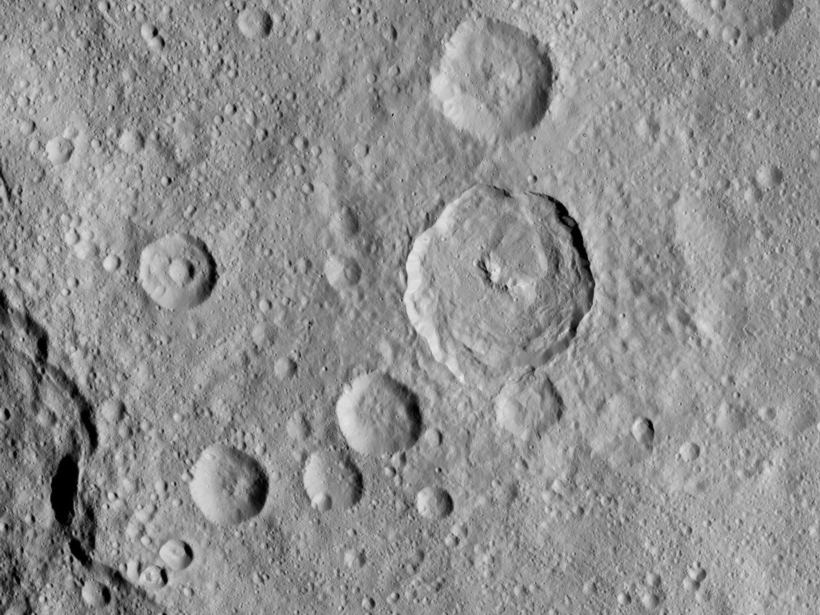It's been 10 years since Pluto was reclassified as a dwarf planet. But no matter the label, it and its dwarf planet cousins continue to stun researchers with their complexity.
dwarf planets
New-Found Dwarf Planet Points to Solar System's Chaotic Past
Astronomers have discovered an icy ball in the dark and frigid regions of the outer solar system, which they suspect harbors secrets to the solar system's formation and evolution.
Objects That Slam into Ceres Remain on Its Surface
Hypervelocity impact experiments shed new light on the composition and evolution of the largest dwarf planet's little-known surface.
The Dwarf Planet That Came in from the Cold—Maybe
The presence of ammonia-rich clay on much of the surface of Ceres suggests that this dwarf planet—the largest object in the asteroid belt—may have formed far out in the solar system, then wandered in.
Pluto Image Shows First Picture of Its Atmosphere
Scientists are amazed by new images that show Pluto's atmosphere and diverse geology.
Dawn Spacecraft Enters into Orbit Around Dwarf Planet Ceres
A 16-month investigation of the dwarf planet Ceres could reveal a lot about the most massive body in the asteroid belt and could advance our understanding of the formation of terrestrial planets.






